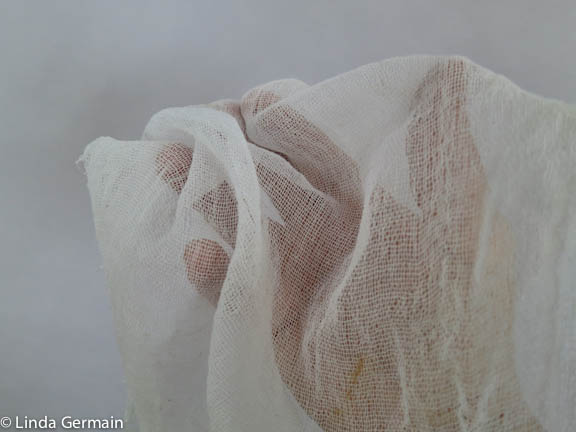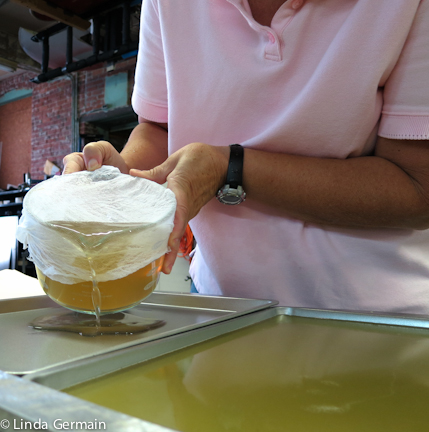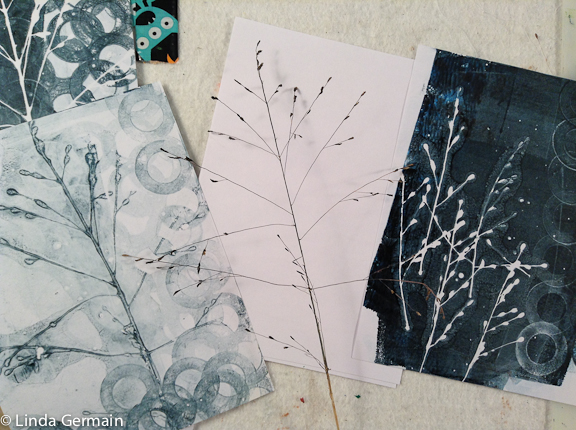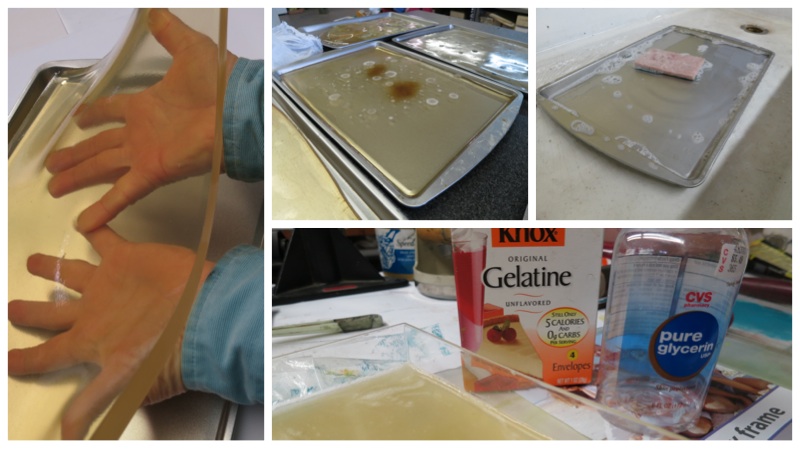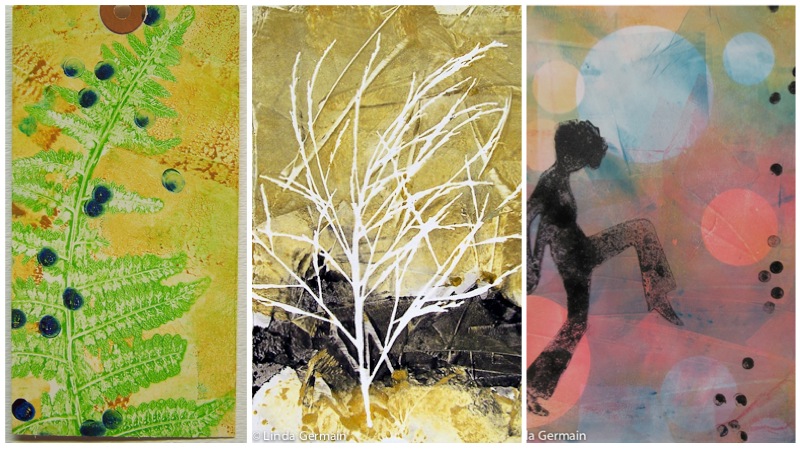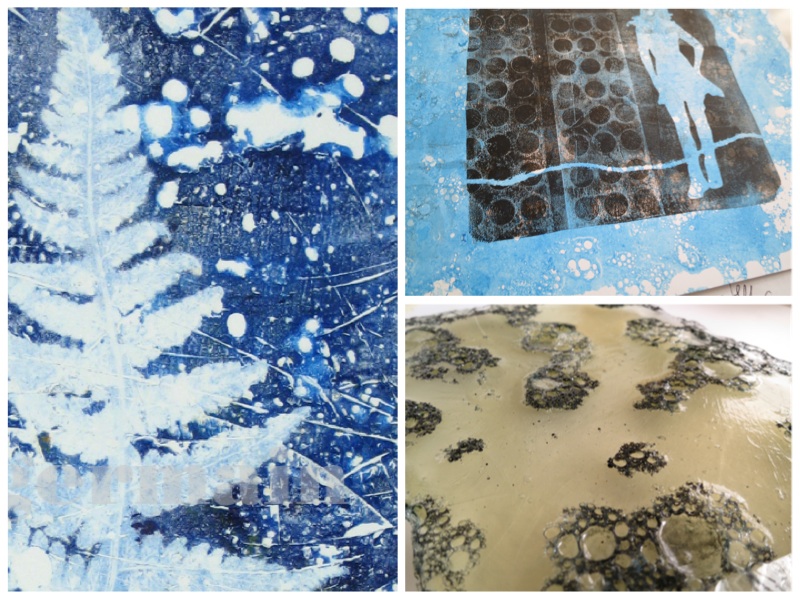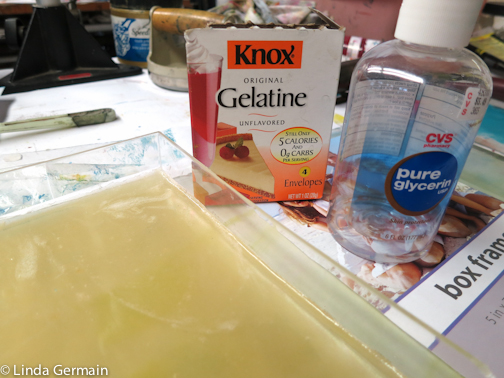Refreshing the Gelatin Plate
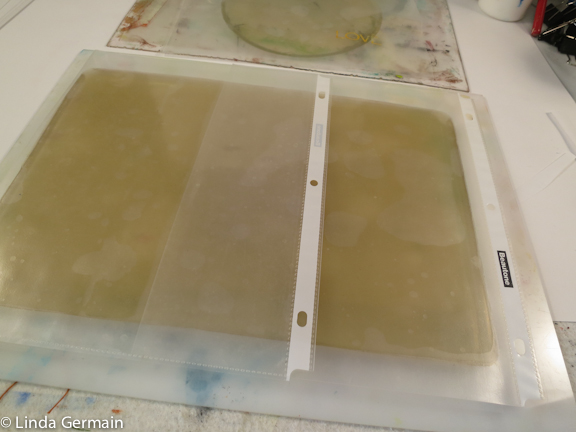 I have not used my homemade gelatin plate in several months.
I have not used my homemade gelatin plate in several months.
I cut it up and froze it when I realized that I would not be monoprinting for a while.
A few days ago I
- took it out of the freezer
- Microwaved it slowly
- Poured it into may shallow pan
- Let it set up
I still have not printed and it is summer time here in New England.
The plate lasts longer and seems to work best when it is used regularly.
I store it like this if I am not printing for a few days:
- Loosely covered to slow down evaporation
- Page protectors are smooth and will not create as many lines as plastic wrap
- Plastic bag loosely pulled over each end.
- I do stack plates is I have more than one
- these gelatin and glycerin plates are long lasting, but not for ever.
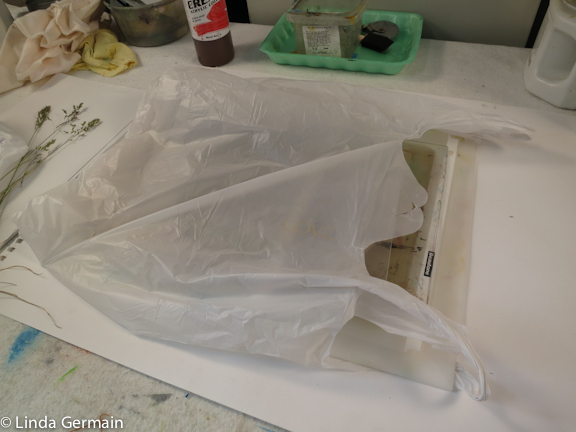 I really need to get printing! I found some delicate grasses that have inspired me.
I really need to get printing! I found some delicate grasses that have inspired me.
I have set the dates for the next Make Monotypes – online printmaking class.
- Early Bird Discount and registration starts June 3rd
- Class start July 6th
- Check out the details here
Refreshing the Gelatin Plate Read More »
